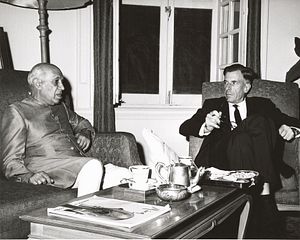On October 16, 1962 National Security Advisor McGeorge Bundy opened his top secret morning daily briefing book in his West Wing office at the White House. Two urgent memos were inside. In the first the State Department warned that “fighting on the Sino-Indian border has become much more serious” than normal and that India might soon need American assistance. In the second, the Central Intelligence Agency reported that U2 imagery had confirmed the delivery of offensive intermediate range missiles to Cuba. On opposite sides of the globe President John F. Kennedy was facing urgent crises. In the Caribbean, the United States and the Soviet Union would soon be eyeball to eyeball in a nuclear crisis which could have resulted in Armageddon. In the Himalayas, the two most populous countries in the world, India and China, were at war. A third country, Pakistan seemed poised to enter the conflict. It was perhaps the single most dangerous moment in modern history.
At the time, Americans definitely believed the Cuban missile crisis was the most dangerous event of the Cold War, the closest the United States and the Union of Soviet Socialist Republics (USSR) had come to a direct military clash that would precipitate nuclear war. Decades later we know from Soviet records that the situation was even more dire than was thought in 1962. At the time the CIA estimated there were between 6,000 and 8,000 Soviet troops on the island; in fact there were 50,000. Unbeknownst to the CIA and Kennedy, the Soviets had not only sent medium and intermediate range ballistic missiles to Cuba, they had also deployed tactical missiles called FROGs, with nuclear warheads. Soviet forces on Cuba were ready to fire nuclear weapons at the U.S. Naval Base at Guantanamo Bay with its garrison of 5,000 Marines if the Americans decided to bomb the longer range missiles and warheads that threatened America’s cities.
The president ordered the Pentagon to prepare to invade Cuba. Operation Scabbard envisioned 120,000 troops from eight divisions going ashore in a D-Day style assault. Two U.S. Army airborne divisions would parachute into Cuba. The First Marine Division would conduct a separate landing. Three aircraft carrier battle groups, including the first ever nuclear-powered carrier, USS Enterprise, would provide air support. If the Americans invaded the island, the Russians would use their tactical nuclear weapons to defend the beaches. If Kennedy had accepted the advice of most of his military advisers and attacked the island, nuclear war would have begun immediately.
Meanwhile…

































